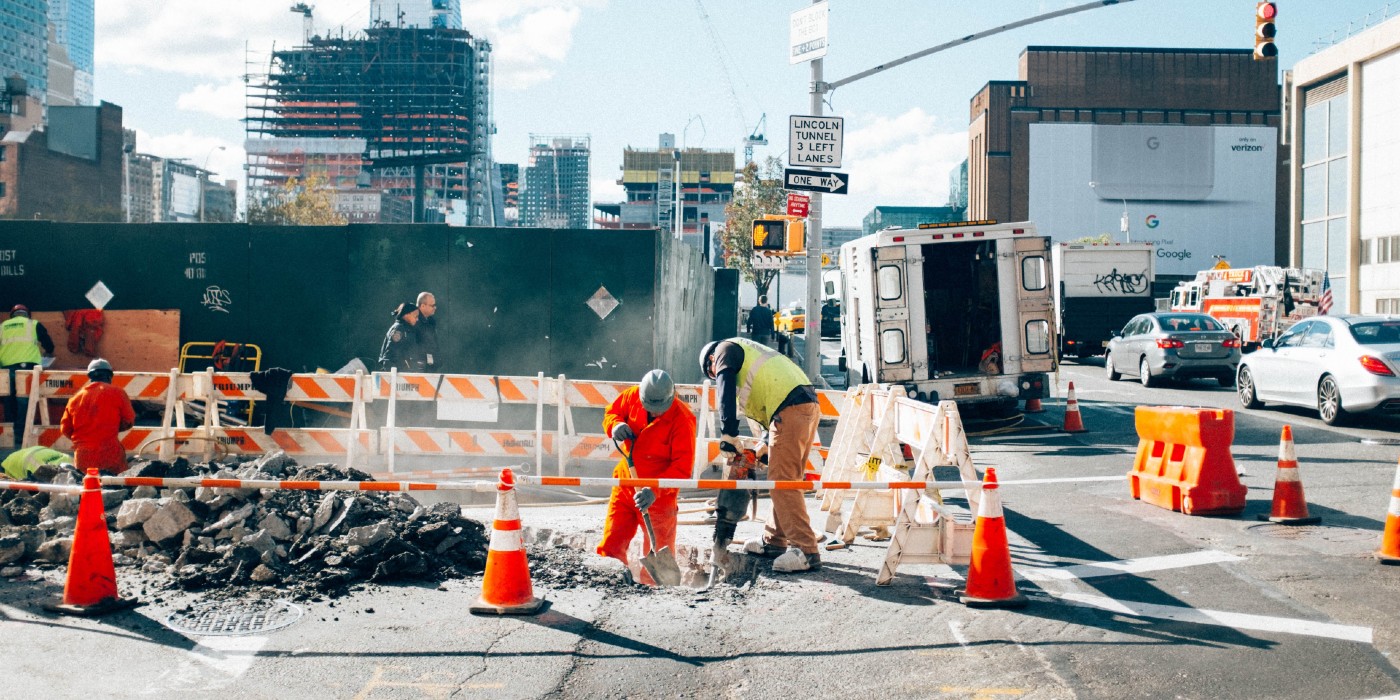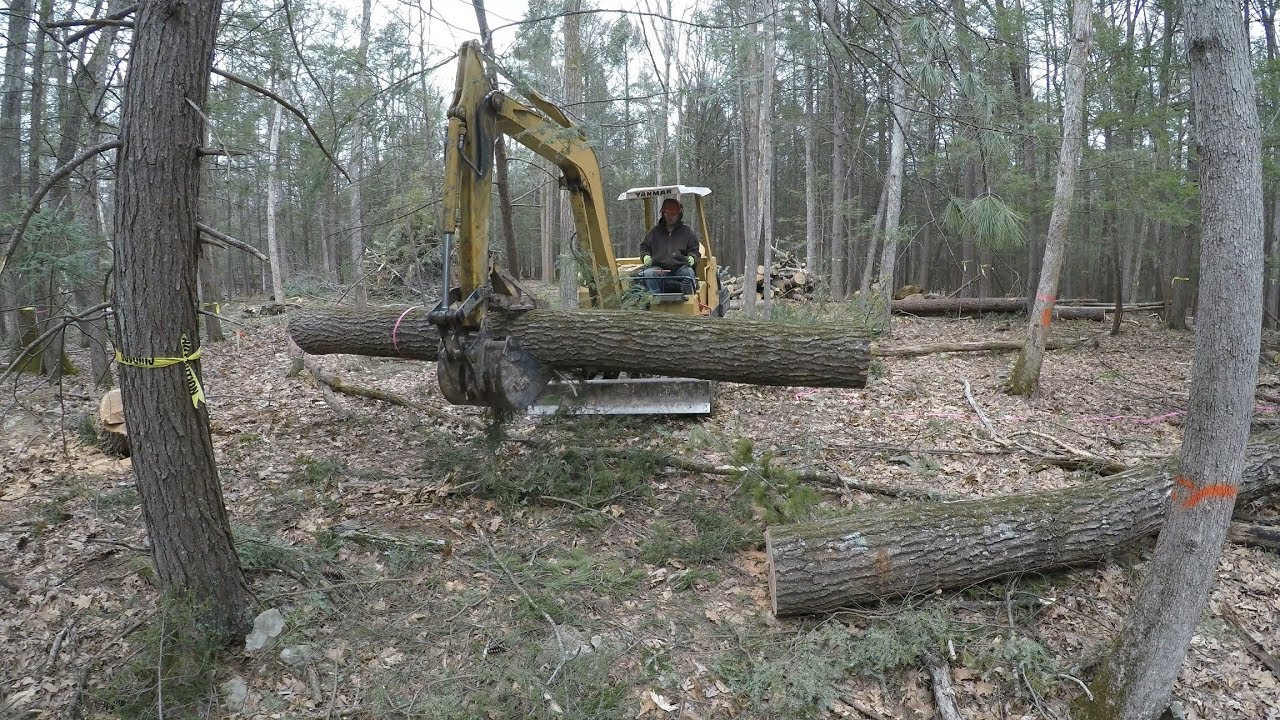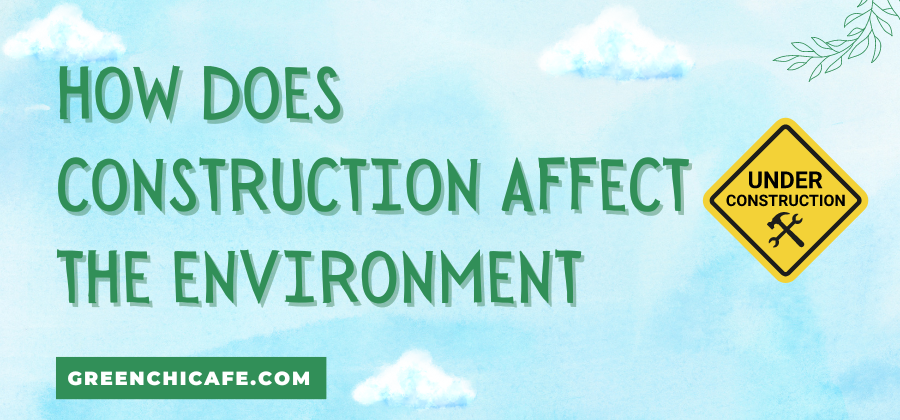Construction activities have wide-ranging impacts on the environment, from greenhouse gas emissions to habitat loss.
Understanding these effects is key to mitigating ecological damage from the construction industry.
Evaluating and addressing the biodiversity, climate, and health consequences across the construction process is vital.
How Does Construction Affect the Environment?

Construction activities have major environmental impacts including sizeable greenhouse gas emissions from energy use, habitat destruction and fragmentation from land clearing, soil erosion and sedimentation, waterway pollution from runoff, and significant material waste generation.
Adoption of sustainable construction practices is critical to limit ecological damage.
Key Points
- Building construction generates 11% of CO2 emissions from fossil fuel use.
- Clearing land destroys natural habitats and reduces biodiversity.
- Construction runoff containing sediment, debris and chemicals harms water quality.
What Is The Carbon Footprint of Construction?
Building construction accounts for 11% of global CO2 emissions from fossil fuel combustion.
Manufacturing materials like cement and steel is energy-intensive, requiring abundant electricity.
How Does Construction Impact Ecosystems?

Clearing land for construction destroys habitat and disrupts ecosystems.
Fragmenting landscapes also reduces biodiversity by impeding animal movement and plant pollination.
Does Construction Generate Air Pollution?
Yes, heavy construction equipment burns diesel fuel which emits particulate matter, nitrogen oxides, volatile organic compounds, and carbon monoxide into the air.
Can Construction Increase Soil Erosion?
Excavation and earthmoving remove stabilizing vegetation and expose bare soil, escalating erosion from wind and rainfall.
Runoff sedimentation can harm waterways.
How Can Construction Impact Water Quality?
Construction sediment, demolition debris, and hazardous chemicals can contaminate stormwater.
Groundwater aquifers are also threatened by industrial spills, petroleum leaks, and waste.
Does Construction Produce Excessive Waste?
Yes, between 10-30% of construction material is lost to waste.
Disposal consumes landfill space and releases methane as organic materials decompose.
How Can The Industry Reduce Environmental Damage?
Sourcing eco-friendly materials, minimizing waste through good planning, buffering habitats, reducing truck traffic, and using efficient green building techniques are all constructive measures.
How Does Building Affect the Natural Environment?
Construction activities, from infrastructure development to housing, have profound impacts on the natural environment in multiple ways.
Clearing vegetation and trees for buildings and roads destroys habitat for many species, fragmenting once contiguous ecosystems.
This loss of habitat degrades biodiversity as animals lose migratory corridors and breeding grounds.
Excavation and soil disturbance lead to massive erosion issues, with sediments washing into rivers and lakes during rains.
Runoff also brings other contaminants like motor oil, fuel leaks, construction chemicals, debris, and particulate matter into water systems, degrading water quality and harming aquatic life.
Construction also contributes significantly to air pollution through greenhouse gas emissions from energy-intensive material manufacturing and vehicle/equipment exhaust.
Noise, light, and water pollution further disrupt urban plant and animal populations.
Proper environmental assessment, sustainable siting, and pollution mitigation practices are needed to limit damage from necessary building activities.
What Are The Effects Of Construction On The Environment?
Construction effects on the environment are wide-ranging, including large greenhouse gas emissions, habitat, and biodiversity loss from land clearing and ecosystem fragmentation, soil erosion and runoff into waterways, contamination from chemicals and wastes, resource overuse, and urban heat island amplification from dark paved surfaces.
Active mitigation is required to prevent unnecessary environmental degradation.
Sustainable building practices like minimizing material waste, buffering natural areas, reducing truck traffic, using eco-friendly building materials, renewable energy, and water conservation can help.
However, the damage is ultimately unavoidable given the construction’s massive scale and environmental footprint.
Conscientious project siting, resource use, wildlife protection, emissions minimization, and habitat enhancement are crucial to making essential construction net-positive for the environment to the greatest extent possible.
How Can The Construction Industry Become More Sustainable?
Transitioning to renewable energy, optimizing material use by preventing waste, sourcing eco-friendly and recycled construction materials, protecting and relocating wildlife, containing and treating runoff through wetlands and retention ponds, minimizing light and noise pollution, restoring habitats, and stringent emissions controls can all promote sustainability.
Most importantly, proper environmental impact assessment and community/ecological considerations must drive project siting and design.
The scale of construction necessitates responsibility, restraint, and repair of unavoidable damages.
Key Takeaways:
- Construction radically transforms environments in far-reaching ways.
- However, sustainable design principles and conservation practices can significantly limit deleterious impacts from the built world.
FAQ
Does Construction Use Significant Water?
Yes, construction projects require abundant water for mixing concrete, suppressing dust, washing vehicles and equipment, and human needs, straining local water supplies.
Can Construction Increase Noise Pollution?
Yes, loud machinery and demolition contribute substantial noise pollution which disturbs urban wildlife and causes stress for human populations.
How Does Construction Impact Climate?
In addition to greenhouse gas emissions, construction contributes to heat islands in cities through heat-absorbing dark paved surfaces and lack of vegetation.
At GreenChiCafe, we are passionate about sustainability and protecting the amazing natural world around us.
Visit our website to learn more about environmentally friendly products and practices.
